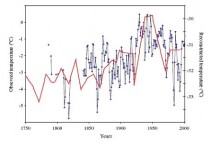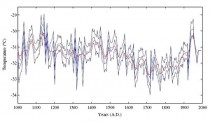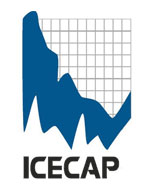Matt Dempsey
Link to Inhofe EPW Press Blog
Link to S. 482, the Energy Tax Prevention Act of 2011
After Obamacare took effect, opponents realized that delaying Obamacare was not an option. The same principle applies to the Rockefeller bill: EPA’s cap-and-trade agenda under the Clean Air Act is bad policy, which will raise energy prices and destroy jobs. It should be repealed, not delayed.
The choice, then, is clear: the Upton-Inhofe bill repeals EPA’s regulatory power grab, while the Rockefeller bill allows it to continue after only two years. In effect, Rockefeller implicitly endorses EPA’s cap-and-trade agenda under the Clean Air Act; thus a vote for Rockefeller is a vote for EPA’s cap-and-trade agenda.
Rockefeller also fails to provide certainty for business planning and investment. Businesses typically plan on a 10- to 15- year time horizon. A two-year delay does nothing to clarify the contours of the regulatory landscape, and would merely prolong the uncertainty currently plaguing the economy.
Rockefeller also has serious practical flaws:
1) It does not prevent EPA from issuing a National Ambient Air Quality Standard (NAAQS) for carbon dioxide and methane; nor does it bar the use of other existing CAA authorities to regulate stationary sources.
2) It does not prevent EPA from establishing new regulatory standards under Title II (which covers mobile sources), including low-carbon fuel standards, which will reduce domestic oil supplies and increase our dependence on foreign oil.
3) It does nothing to prevent EPA from retroactively requiring GHG controls on covered sources. And even if sources were able to complete permit applications during the 2-year moratorium, the bill does not prevent EPA from holding those permits up until after the moratorium expires.
4) It applies to CO2 and methane gases only. But pursuant to EPA’s endangerment finding, EPA is moving forward with regulations relating to four other (six total) GHGs.
5) It does not relieve states from enforcing federal requirements. Most states (rather than EPA) administer CAA permitting programs.
6) It leaves the endangerment finding in place, thereby providing a legal basis for climate change “nuisance suits” sponsored by environmental pressure groups hostile to energy development. In addition, it does not prevent citizen suits under the CAA to enforce greenhouse gas permitting requirements.
Upton-Inhofe removes all of these complications by simply repealing EPA’s cap-and-trade agenda. Rockefeller leaves them in place. Again, the choice is clear.
See also Marlo Lewis’s H.R. 910: Seizing the Moral High Ground (How to Foil Opponents’ Rhetorical Tricks).
Yesterday the House Energy & Commerce Committee approved H.R. 910, the Energy Tax Prevention Act, by 34-19. Reps. Waxman, Markey, Inslee and others offered hostile amendments, none of which had any chance of passing, but that was not their purpose. All the hostile amendments were designed to trick H.R. 910 supporters into abandoning their moral high ground. All were designed to suck supporters into affirming controversial positions that H.R. 910 neither presupposes nor implies.
Opponents’ strategy was to change the subject so that H.R. 910 supporters would end up debating climate science, climate change risk, or oil dependence rather than the real issue: the constitutional impropriety of EPA ‘legislating’ climate and energy policy through the regulatory backdoor. More than a few Republicans took the bait, allowing the other team to define, and thereby occupy, the moral high ground.
When the bill finally gets to the House floor - and is voted on today in the Senate—supporters need to do a better job of anticipating and foiling opponents’ rhetorical tricks.
Today in the Daily Caller, my colleague Phil Kerpen of Americans for Prosperity writes:
Article I, Section 1 says: “All legislative powers herein granted shall be vested in a Congress of the United States, which shall consist of a Senate and House of Representatives.” But in the Age of Obama, it’s a different story. The legislative powers are being exercised by unelected, unaccountable bureaucrats. Now the Senate will be put to the test of whether each senator is OK with that state of affairs, or whether they actually want to take responsibility for writing the laws. That’s the fundamental question at stake as the Senate considers the McConnell Amendment to stop the EPA’[s global warming power grab.
Exactly! Read Phil’s column here.
By Alan Caruba
Have you noticed that you rarely hear “global warming” mentioned on radio or television and the term rarely occurs any more in the print media?
One reason is that it has been replaced with “climate change” and the other reason is that the only people talking about climate change seem to be leaders of governments like the United States or Australia.
To borrow a line from Shakespeare, I come to bury global warming, not to praise it.
An early and unrelenting skeptic from the days it first debuted in the late 1980s, I rather instinctively knew that the only warming occurring was the same natural warming that always follows a cooling cycle; in this case the warming that began in 1850 after the Little Ice Age that began around 1300.
It never made sense to me that “industry” should be blamed for pumping massive amounts of carbon dioxide into the atmosphere when the amount of CO2 was a minuscule 0.038 percent with far greater amounts of hydrogen and oxygen that protect the Earth from becoming the galactic equivalent of a toasted marshmallow.
Then, too, like oxygen, all life on Planet Earth is dependent on CO2, a gas that the Environmental Protection Agency is actually calling a “pollutant.” That is so absurd that I was confident people would laugh the whole “theory” out the door when it was first proposed. But that was over two decades ago.
The end didn’t begin until November 2009 and the release of thousands of “Climategate” emails between the meteorologists supplying the bogus data that the United Nations Intergovernmental Panel on Climate Change (IPCC) used to generate the greatest hoax of the modern era.
Not since the discovery of the “Piltdown Man” had so many scientists allowed themselves to be taken in by a complete fabrication; one based entirely on falsified computer model data. Worse still, many climbed on board the global warming bandwagon to reap some of the billions in grant money involved.
The fact that “global warming” was generated by the United Nations should have been the red flag that something was not just wrong about it, but that it hid an agenda aimed at Western industrialized nations.
I think global warming gained credibility as much from the support of the leaders of Western nations as from the great difficulty skeptical scientists encountered in gaining any traction against it. To this day President Obama still prattles on about the need for solar and wind power to replace fossil fuels in order to avoid “climate change” from their use.
The current Prime Minister of Australia is busy trying to impose a carbon tax on that nation. The British have dug themselves a deep hole by embracing windmills instead of coal mines. Billions have been wasted by Spain and Germany on alternative energy sources.
The anti-energy agenda will have devastating affects on life in the West. Electricity consumers in the United Kingdom were recently told by the CEO of the country’s grid operation that, by 2020, they will have to get used to having no electricity for periods during the day and night. This will put the U.K. on par with North Korea. And the U.S. is not far behind if it does not quickly reverse current energy policies.
In the U.S., the leading voice for “global warming” became the former Vice President Al Gore who, following his defeat for the presidency, set about becoming a multimillionaire with all manner of “global warming” projects and enterprises. He would eventually win an Oscar for his documentary and a Nobel Peace Prize that was shared by the IPCC. Today, however, Al Gore is a joke.
The legacy of “global warming” has been the decades-long attack on U.S. energy sources until today our vast resources of coal and oil remain in the ground instead of being available as the price of oil increases due to troubles in the Middle East and the cost of electricity increases due to laws mandating that utilities must buy from wind and solar electricity producers who would be out of business by next week without those government mandates.
The public acceptance of the “global warming” hoax has waned even as the mainstream media has tried to hide the truth. The rise of the Internet has seen to that and other more pressing, real challenges are shoveling dirt onto its grave. 9/11 refocused public attention on a real threat. The 2008 financial crisis still holds the nation in its grip.
And a President whose first two years have generated massive resistance now only occasionally references “climate change.”
The global warming corpse is not quite dead, but dead enough for now. The question is what new fraud will the United Nations and environmental organizations perpetrate? The “acidification” of the world’s oceans? “Species extinction” or “Invasive species”? Be assured, the UN mafia is at work on something.
World Climate Report
We hear over and over that any warming at the global scale will be amplified in the Arctic region of the Northern Hemisphere, and the warming will cause ice to melt and sea level to rise and all the rest. Let some ice-free area appear during summer near the North Pole and the global media will take the bait every time and announce we are witnessing geophysical changes of Biblical proportions. Several articles have appeared recently in leading journals with interesting results regarding the temperature history of the Arctic over the past 1,000 to 1,500 years, and they show that temperatures there have risen and fallen to a significant degree many times in the past (that is, without the benefit of large changes in atmospheric CO2 levels), and they call into question whether any unusual warming (or cooling) has occurred there in recent decades.
The first article appeared in Climatic Change and was generated by six scientists with California’s Scripps Institution of Oceanography, Japan’s Institute for Global Environmental Strategies, the French Laboratoire de Glaciologie et Geophysique de l’Environnement, Japan’s National Institute of Polar Research, the University of California, San Diego, and Japan’s Meteorological Research Institute; the work was funded by the United States National Science Foundation.
This is a long and detailed article in which the authors show that temperatures in Greenland can be reconstructed using isotopes of nitrogen and argon trapped in air bubbles that can be found in ice cores. They used an ice core from central Greenland and made detailed measurements of the nitrogen and argon isotopes. Along with many other tests, Kobashi et al. compared their reconstructed temperatures to actual historical measurements from Greenland’s south and west coasts, and as seen in Figure 1, things look rather good.

Figure 1. Enlarged. Observed (blue) and reconstructed (red) Greenland temperature records. The observed record is a compilation of records from llulissat, Nuuk, and Qaqurtop located along the south and west coast of Greenland. To smooth the observed data, a 2-year moving average is applied (from Kobashi et al., 2010)
While the observational record is at best a few hundred years long, Kobashi et al.’s reconstructed temperatures go back 1,000 years (Figure 2). The full reconstruction is quite interesting as it clearly shows a relatively warm and early period culminating in greatest warmth near 1150; the Medieval Warm Period certainly appears in the record. A cooling begins near 1450 and culminates in a particularly cold period from 1700 to 1850; the authors refer specifically to the “severity of the late Little Ice Age”. Fortunately, Greenland recovered from the Little Ice Age with pronounced warming from 1850 to 1950. After the final period of cooling from 1950 through the mid-1990s that is depicted in Figure 2, temperatures have once again risen to mid-20th century levels (a rise that occurred after the end of the period of record analyzed by Kobashi et al. and thus not appearing on Figure 2). But before attributing the temperature rise during the past 10 years to the buildup of greenhouse gases, it is worth considering the ups and downs apparent in the entirety of the temperature record as shown in Figure 2, and also recalling that atmospheric CO2 levels were increasing between 1950 and 1995, when temperatures were declining in Greenland.

Figure 2. Enlarged. The last 1,000 years of Greenland temperature derived from nitrogen and argon isotopes in air bubbles in ice. Thick blue line is mean of results of Monte Carlo simulation, and thin blue lines are error bands (1σ![]() . Red line is a smoothed temperature history (50-year running mean) (from Kobashi et al., 2010)
. Red line is a smoothed temperature history (50-year running mean) (from Kobashi et al., 2010)
Peering back to 1000 AD was fun, but a second recent article in the Norwegian Journal of Geology contains an Arctic reconstruction going back even further, to 500 AD. The work was produced by three scientists with Norway’s University of Tromso and the Geological Survey of Norway. Rorvik et al. focused on a sediment core extracted from the Malangen fjord located in northern Norway. The fjord is well-situated to capture variations in temperature that would be reflected in changes in currents near the fjord. Just like magic, organic cysts collect on the bottom and over time, variations in the types of cysts are related to variations in temperature. The authors never produce a graphic showing the changes in temperature from 500 AD to present, but they clearly describe the results.
They note “In general, the time from c. AD 500 to 790 in the Malangen fjord is characterized as a cool period with reduced salinity. A cooling during this time interval, referred to as the Dark Ages Cold Period, is supported by regional and local history.” Next, they state “The dinocyst assemblages during the years AD 790 to 1500 indicate that the Medieval Warm period in the Malangen fjord, was characterized by increased inflow of warm, saline water. The Medieval optimum from the years AD 800/1000 to AD 1300/1500, has been reported as a warm phase from the Vøring Plateau, Norway, from North Sweden and northern Norway, Crete, Camp Century and GISP2 Greenland and Quelccaya Peru and from Nansen Fjord, eastern Greenland” (so much for the Medieval Warm Period being a local phenomenon - Peru is hardly near the Norwegian study area!).
Do you think they found evidence of the Little Ice Age (LIA)? Rprvik et al. state “Bottom water reconstructions in the Malangen fjord clearly reflect a cold period during the LIA and the dinocyst assemblages indicate that the time period from AD1500 to 1940 represents a cool period.” The Norwegian reconstruction shows warming since 1940 (in their zone D in the core); the authors write “The interpretation of the dinocyst assemblages of zone D, is consistent with somewhat less influence from waters outside the basin and is interpreted to represent a period with relatively high surface temperatures.”
There is no evidence presented comparing the current warm period to the Medieval Warm Period. But a message is clear - temperatures in the high latitudes are naturally quite variable, even on timescales of hundreds of years.
We’ll keep our eyes on the situation, but based on these articles, you’d be hard-pressed to conclude that temperatures in these regions as of late have risen above the rather high noise level characterizing natural variation.
References
Kobashi, T., J.P. Severinghaus, J.-M. Barnola, K. Kawamura, T. Carter, and T. Nakaegawa. 2010. Persistent multi-decadal Greenland temperature fluctuation through the last millennium. Climatic Change, 100, 733–756.
Rorvik, K.-L., K. Grosfjeld, and M. Hald. 2009. A late Holocene climate history from Malangen, a north Norwegian Fjord, based on dinocysts. Norwegian Journal of Geology, 89, 135-147.


